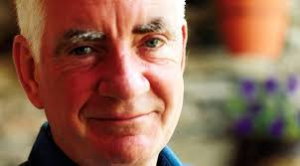Richard Pine recalls Bernard Loughlin, who died last month after an accident at his home in Spain:
“As you’re writing about Brian Friel, we’ve put you in Guthrie’s study.” This was Bernard Loughlin’s judicious and caring welcome on my first visit to the Tyrone Guthrie Centre at Annaghmakerrig. And there, for a month, I sat and wrote most of it, in what I discovered was – and is – one of the most sustaining and exciting places for the creation of any work of art. Not just a place of arrival, but one of many departures. Altogether I wrote two books at Annaghmakerrig, as well as completing many other projects. Sometimes in the house itself, sometimes in one of the adjoining cottages, an always with joy in my heart and power in my pen.
It was an age, and a place, of discovery. We were (mostly) young, we were (mostly) inexperienced, we were all asylum seekers. It was Ireland’s first designated artists’ colony and much depended on how it was managed.


Annaghmakerrig became a home of unique character, much of it due to the creativity and humanity of its first concierges, Bernard and Mary Loughlin. I use that word, concierge, in a very special sense: the Loughlins were the custodians of the house, but they were also the foster parents of its inmates. They were our guardians, our providers and our friends. They did it with flair, grace and wisdom. With no disrespect to the directors who came after them, Annaghmakerrig as an artists’ refuge, building on the legacy of Tyrone Guthrie, was and is the creation of Bernard and Mary Loughlin.
Even though Bernard and his family had their own tragedy at Annaghmakerrig (of which none of us was aware at the time), nothing disturbed the sense of the house as a forum, a generator, even at times a madhouse when a company like Charabanc would move in and swamp us with their energies. Over it all, Bernard presided like a Belfast Buddha.
On my first night at dinner Mary asked: “Did you like that bolognese?” Was it a trick question? Yes it was. “There was no meat in it, I wondered if you had noticed. It was TVP.” Welcome to Textured Vegetable Protein, and very good it was too. So our education consisted not only of growing into artists but being well-fed and aware of the meat-alternatives, in the always superb cuisine of Mary Loughlin with Doreen Burns and Ingrid Adams. This was community, and it took some getting used to.
Many of my friends didn’t believe I could be staying near a place called Newbliss and some formed the impression that I must have a Monaghan mistress named Anna McKerrig ‑ which, in a sense, was true.
As a writer, and a secluded one, it was an eye-opener to find oneself in the company of painters, sculptors, musicians, actors and directors. Janet Pierce, Felim Egan, Jim Sheridan, the benign presence of Eugene McCabe, a vital link to the Guthrie years. Joe Hone, who had lived in the house as a child. Leland Bardwell, existing chaotically in the gate lodge, and painter Helen Comerford timidly asking her “May I do your portrait? You have the most lived-in face I’ve ever seen.” Theo Snoddy, sitting helplessly in the hope someone would make his breakfast. Susan O’Reilly, chair of the board, arriving with vast armfuls of rhubarb from her own garden, which some of us dutifully ate. An incredibly young Marina Carr, working on her first play. A Joseph O’Connor yet to lose his innocence. Chrissie Poulter, quizzing me about Friel and thereby adding depth to my work. A bearded Colm Tóibín, not yet a novelist but already a wise man of letters. And of course I fell in love, unrequited, with Dorothy Cross. Who wouldn’t?
I have witnessed two painters from Belfast, one Protestant, the other Catholic; neither had ever met a member of the other persuasion. After a few days’ sniffing around each other’s backgrounds, they became friendly, if not exactly friends, showing that their art could hop the wall that had divided them. I have witnessed a young poet crying from an excess of happiness.
I’ll always carry these memories of Annaghmakerrig, which are images and reverberations of a home of culture living, through us, into the drumlins and beyond and they are inextricably indexed to my memories of Bernard as châtelain, gardener and oracle. Above all, over the many times I have worked there, I witnessed the steady growth in Bernard and Mary’s vision, both of the physical spaces and in the maturity of the place as a haven: a provocative and unrelenting haven for those whose needs it could meet with its own sense of destiny.
Bernard was a man to whom tranquility, the driest of humour and a down-to-earth sense of the ethereal seemed to come naturally. In a sense we were all Bernard Loughlin’s creatures: he nurtured us, respected us, sometimes berated us, and was always there for us. Bernard lovingly described his work in restoring the gardens surrounding Annaghmakerrig. What he said about the process also describes the essential gift that he and Mary gave to all of us: “to create a fertile ground”.
1/11/2018



